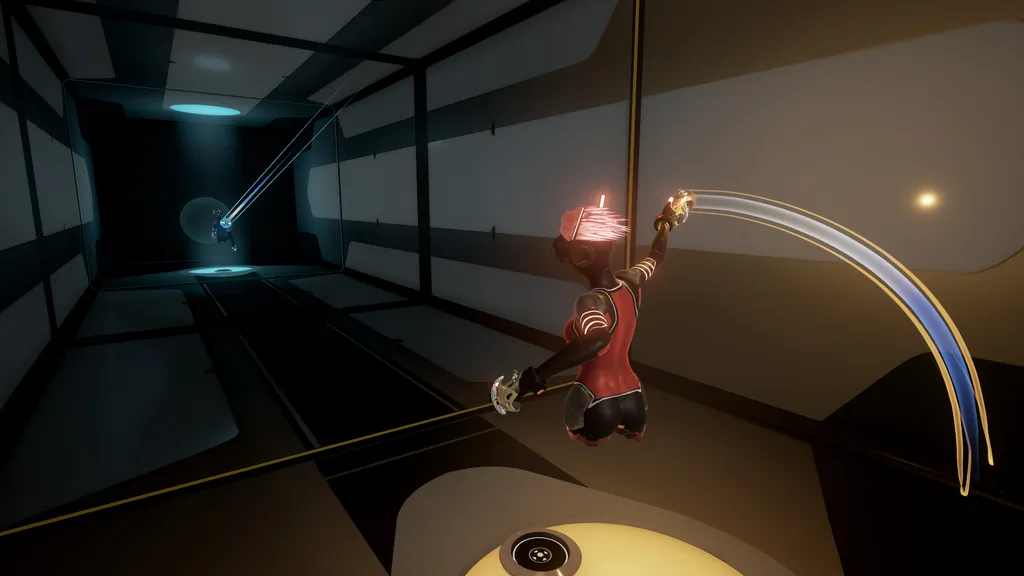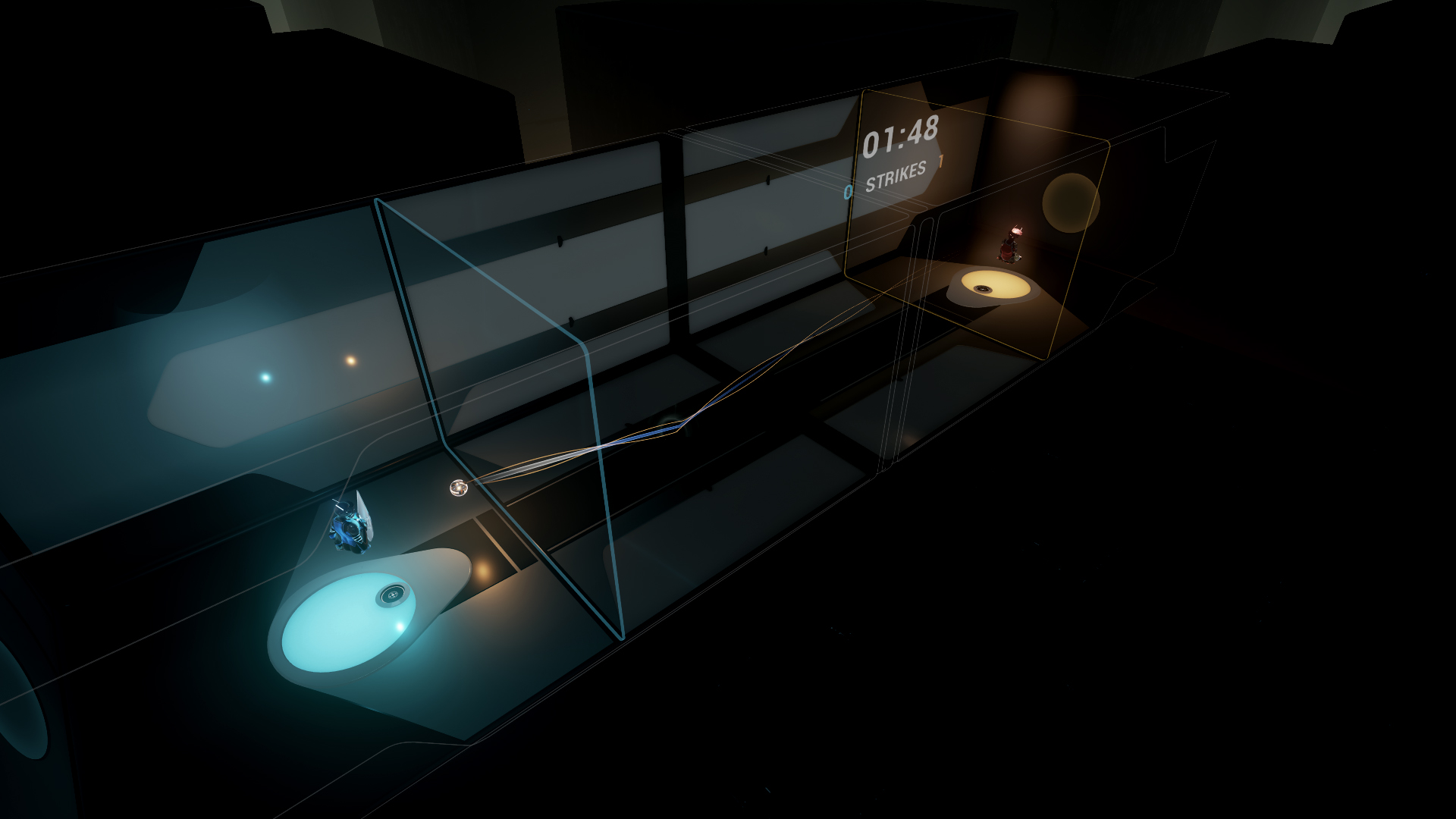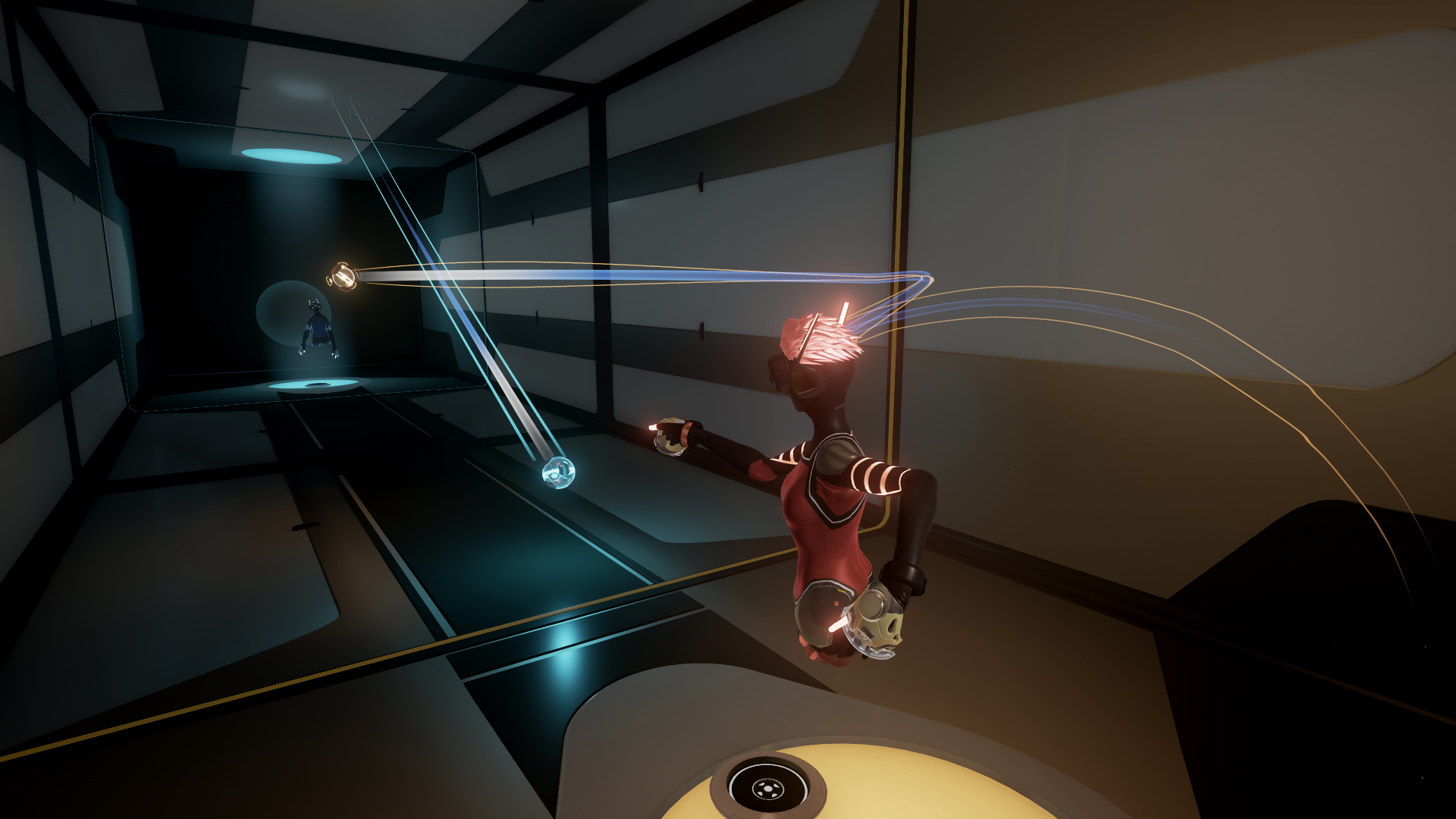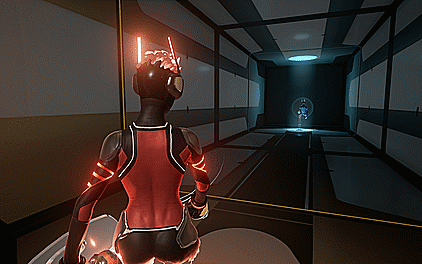As they strapped me into the headset for my demo in Iceland at EVE FanFest this week, a small wave of excitement washed over me. Sparc, the virtual sport being developed by EVE-creator CCP Games, pits you against another player in a game of skill, fast reflexes and reactions, and a whole lot of practice. However, it’s one of those virtual reality experiences that feels so immediately natural it hearkens back to the early days of Wii Sports.
Presented as a full-body competitive sport, Sparc is fast paced and definitely keeps you on your toes. The game pits two players against each other as they throw projectiles back and forth. You either defend against them by dodging the projectile or blocking it with a shield, or deflecting it with your fists – thanks to some in-game knuckle guards the dev team gave us. You score if you hit your opponent. You can also score if the opponent’s ball hits them after being deflected. That’s about it, but it’s so much more visceral and complex than it sounds.
Recently shown at GDC earlier this year, Sparc has gone under a pretty dramatic change from its original Project Arena incarnation. The Tron-esque disc you and your opponent would throw at each other has been replaced by a ball, opening up more avenues on how you attack your opponent. There really are only one or maybe two real ways to lob a disc, but with the ball, however, things feel infinitely more natural. Overhand throws, underhand, lobs, curveballs — all of these techniques are opened up to you now. The ball reacts as it would in real life not only to your intimate, minute motions such as a subtle twist of the wrist as you release the ball, but also when you deflect it with your shield. There were many times my opponent curved the ball towards me at an unexpected angle all thanks to how they lined up their deflection.
“Instead of making a real world sport into a VR version, we decided to make a sport for VR,” explained Morgan Godat, Sparc’s executive producer during an interview with UploadVR at GDC 2017. “This is your equipment and suddenly it melds together with the rest of the experience to make something more than just a game.”
Sparc is coming to HTC Vive, Oculus with Touch Controller support, as well as PSVR. During my demo I was able to try the Oculus version and was blown away by how well the in-game tracking worked. Thanks to the sensors in the Touch controller, the game knew when I had my fingers on the controllers or when I was moving them. As such, my avatar replicated this in game, which completely added to the realism and immersive nature Sparc is trying to convey. Plus, the ability to wave “Hello” to your opponent in a game like this cannot be overstated.
Each match begins with the two competitors looking down into the area. This is sort of a staging area where you can hang out and and watch matches in person thanks to Sparc’s Courtside, the developers are calling it a “freeform social area.” When you want to join a match you simply pick the ball up in front of you, drop it in the “Play” marker and immediately you’re shrunken down and thrown into the arena. Once there you can wait for your opponent to show up and anyone in Courtside can see your avatar in real time down on the court below them. Once both members of the game are ready, we “touch gloves” and the game begins.
Strategically, Sparc has some depth to it that can only be expanded on. The balls are the catalyst of everything you do. You use it to attack your opponent, but it also serves a defensive purpose. Without the ball in your hand, you cannot throw up your shield to block or deflect incoming attacks. When you do have an active shield though, you can deflect the ball back at your opponent, but each shield is on a one-use charge. You have to throw the ball to “recharge” your shield for the next time you have your ball.
“What we’re trying to do is create a lot of consistency,” said Godat. “Any projectile in the space is going to be dangerous. You can’t catch the opponent’s projectiles but you can dodge your own or catch your own since it will respawn eventually in front of you. You don’t need to turn around and get tangled up — we keep you focused on the action.”
As the first match commenced, it opened up as a waiting game: Who would throw that first ball? The person who throws first is essentially defenseless since there’s no shield without the ball and no way to retaliate quickly if the opponent attacks. My opponent seemingly realized this faster than I did because he baited me into opening each round we played. For the record, I lost all three). One of the developers mentioned while talking afterwards that the team is actively looking at ways to incentivize players to throw, especially at the beginning, so hopefully in the end you don’t have players turtling until the last possible moment they can. This is why, at the moment, each shield only has one charge and to recharge it you have to throw the ball. However, that doesn’t help much at the onset of each match.
As I got the hang of the flow of the game, which sometimes can be slow depending on how you’re throwing the ball while other times it’s pretty fast and furious, Sparc gets your blood flowing and your body moving. The game mode we played was a one-versus-one game of dodgeball. I was ducking, moving, attempting to deflect my opponent’s ball with my knuckle guards to mixed success, and generally having a good time. Quickly it became clear how incredibly intuitive and natural the mechanics felt.
Like throwing a ball in real life, your release point is key in Sparc. And while the in-game tracking is absolutely superb, I did find myself having trouble with the initial throws because I could not quite see my in-game hand as I threw. As a result, many of the balls I initially threw in the tutorial and game proper hit the ground in front of me until that virtual launch point was felt out. And that’s an interesting thing to keep in mind here as well – Sparc may feel intuitive and natural, but that does not mean you’re going to be superb at the game out of the gate. It will take feeling some things out, such as the best ways to throw a ball accurately, when to dodge or when to deflect, and more.
“We tried to come up with a plasma-like look for the characters, because they’re these glowing, solid things in the space,” said Godat. “We’re trying to avoid the uncanny valley and not attempt to make human skin or anything like that, no corpses standing around in VR. Instead of tricking your brain into thinking you’ve teleported into a new world we just want to turn your living room into a Sparc court.”
There’s a lot to like about Sparc, and it seems CCP’s first foray out of the EVE universe is on the right track. It’s a good idea at its core that is being implemented extremely well so far. The tracking in Sparc is superb and really immersed me in the world itself. I forgot for a moment I was standing in a music hall on the shores of Reykjavik, Iceland; instead, I felt as if I was a player in a sport in the future, under-hand lobbing balls for them to dodge in the hopes of scoring enough hits to win the day.
Sparc is expected to launch on Oculus Rift, HTC Vive, and PlayStation VR later this year.
Joseph Bradford is a freelance contributor to UploadVR. He also considers himself an expert on Tolkien lore. Follow him on Twitter for more.





























